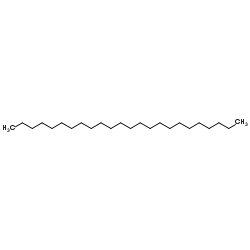Lanthanide sensitization in II-VI semiconductor materials: a case study with terbium(III) and europium(III) in zinc sulfide nanoparticles.
Prasun Mukherjee, Chad M Shade, Adrienne M Yingling, Daniel N Lamont, David H Waldeck, Stéphane Petoud
文献索引:J. Phys. Chem. A 115(16) , 4031-41, (2011)
全文:HTML全文
摘要
This work explores the sensitization of luminescent lanthanide Tb(3+) and Eu(3+) cations by the electronic structure of zinc sulfide (ZnS) semiconductor nanoparticles. Excitation spectra collected while monitoring the lanthanide emission bands reveal that the ZnS nanoparticles act as an antenna for the sensitization of Tb(3+) and Eu(3+). The mechanism of lanthanide ion luminescence sensitization is rationalized in terms of an energy and charge transfer between trap sites and is based on a semiempirical model, proposed by Dorenbos and co-workers (Dorenbos, P. J. Phys.: Condens. Matter 2003, 15, 8417-8434; J. Lumin. 2004, 108, 301-305; J. Lumin. 2005, 111, 89-104. Dorenbos, P.; van der Kolk, E. Appl. Phys. Lett. 2006, 89, 061122-1-061122-3; Opt. Mater. 2008, 30, 1052-1057. Dorenbos, P. J. Alloys Compd. 2009, 488, 568-573; references 1-6.) to describe the energy level scheme. This model implies that the mechanisms of luminescence sensitization of Tb(3+) and Eu(3+) in ZnS nanoparticles are different; namely, Tb(3+) acts as a hole trap, whereas Eu(3+) acts as an electron trap. Further testing of this model is made by extending the studies from ZnS nanoparticles to other II-VI semiconductor materials; namely, CdSe, CdS, and ZnSe.
相关化合物
| 结构式 | 名称/CAS号 | 分子式 | 全部文献 |
|---|---|---|---|
 |
二十四烷
CAS:646-31-1 |
C24H50 |
|
Comparison between solid phase microextraction (SPME) and ho...
2014-09-01 [Talanta 127 , 59-67, (2014)] |
|
OsWS1 involved in cuticular wax biosynthesis is regulated by...
2015-12-01 [Plant Cell Environ. 38 , 2662-73, (2015)] |
|
Identification of Aroma-active Compounds in Essential Oil fr...
2015-01-01 [J. Oleo Sci. 64 , 825-33, (2015)] |
|
Bioactive Phytochemicals from Wild Arbutus unedo L. Berries ...
2015-01-01 [Int. J. Mol. Sci. 16 , 14194-209, (2015)] |
|
Extracellular lipids of Camelina sativa: characterization of...
2014-10-01 [Phytochemistry 106 , 188-96, (2014)] |